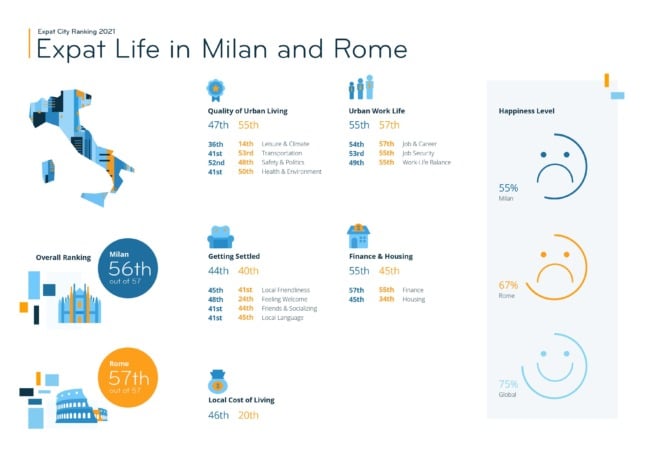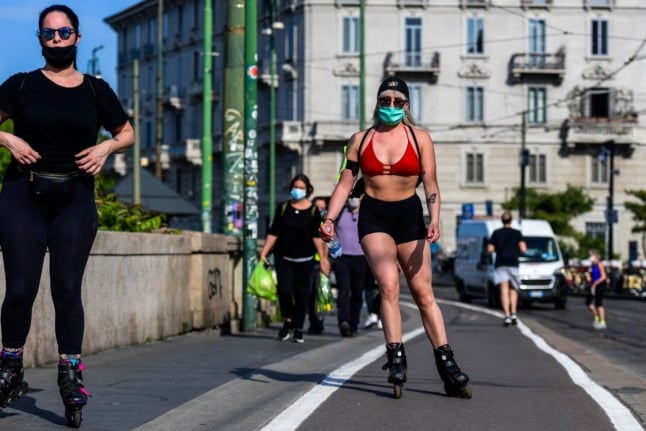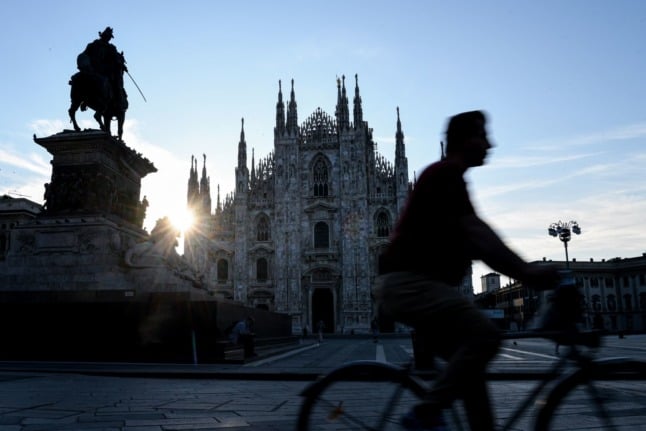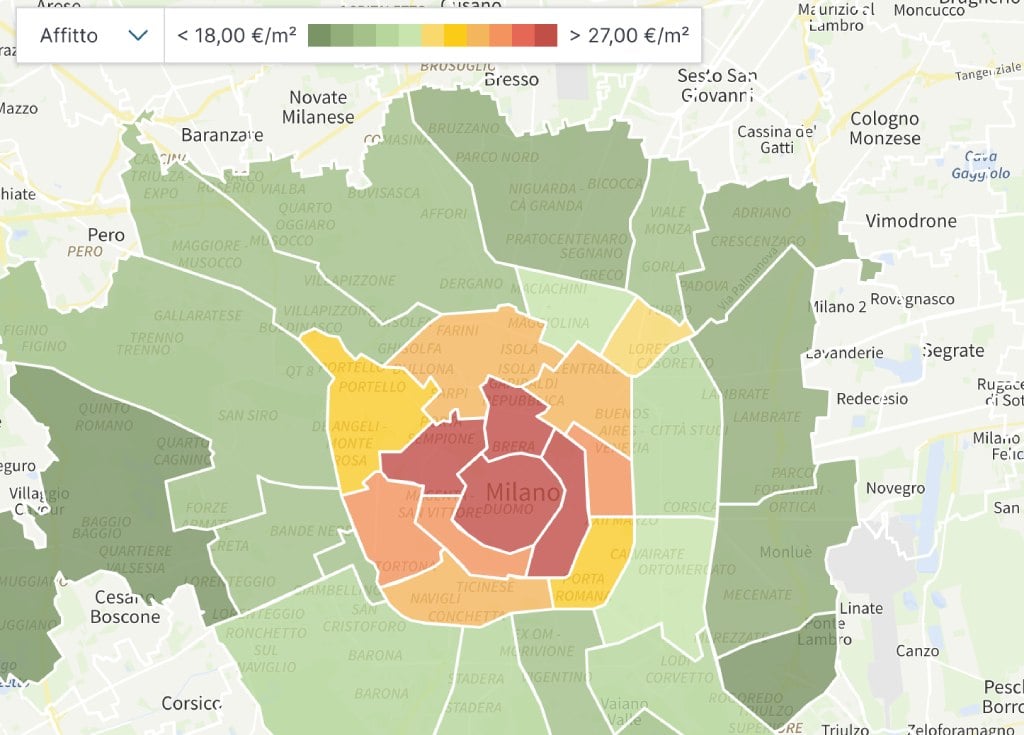Rome and Milan are the two worst cities in the world for foreigners to move to, according to the latest Expat City Ranking by InterNations, an information and networking site for people living overseas.
The site asked members to rate more than 25 aspects of urban life abroad, resulting in Milan coming 56th out of 57 cities and Rome coming an embarrassing last place.
At the other end of the rankings were Kuala Lumpa, taking the top spot for overall satisfaction, followed by the Spanish port city of Málaga and Dubai.

Rome came at the very bottom for the second year running for urban work life and placed last in the Jobs and Career subcategory.
60 percent of residents are unhappy with the career opportunities available to them in the Italian capital, compared to a global average of 33 percent across the other cities surveyed.
READ ALSO: Ten things you need to know before moving to Italy
Just under half (45 percent) are worried about job security, compared to a global average of 20 percent, and almost a third (27 percent) dislike the working hours, compared to 16 percent of residents across all the other cities combined.

“The economy is terrible, and salaries are low,” one Brit in Rome told InterNations.
Despite its status as Italy’s economic capital, Milan fares little better than Rome in the jobs arena, with almost half (47 percent) of residents rating job opportunities in the city negatively, compared to a global average of 33 percent.
Milan is also viewed as a particularly expensive place to live, with housing considered unaffordable by 68 percent of the Milanese residents surveyed, versus 47 percent of Rome’s residents and 39 percent globally.
TELL US: What is living in Milan really like?
The overall cost of living is considered particularly high in Milan, which comes in 46th place in the category. Rome, by contrast, comes in at a respectable 20th place; though fewer than half (43 percent) of residents rate the local cost of living positively, versus 48 percent globally.
The one area where Milan does comparatively well is in its local leisure options, where it places slightly above the average, with 76 percent of residents awarding a positive rating (versus 72 percent globally).

And in Rome, residents like the warm climate, with 86 percent rating its weather highly, compared to just two thirds (66 percent) of respondents worldwide.
But neither cities do well when it comes to overall happiness rankings, with 55 percent of Milan-based respondents and 67 percent of those in the Italian capital saying they are generally happy, compared to a global average of 75 percent.
READ ALSO:
- Job-hunting in Italy: The Italian words and phrases you need to know
- Eight pitfalls people need to avoid to make the dream move to Italy
- The ten positives you’ll notice after moving to Italy from the US
As in previous years, Rome gets especially low scores for its public transportation system: half (47 percent) of the city’s foreign residents are unhappy with the public transport network, versus 20 percent of those living elsewhere.
Overall, Rome outperforms Milan when it comes to the ease of getting settled, housing, finances, and the local cost of living – but Milan scores higher on quality of life.

Where should foreign nationals in Italy go for the best possible living conditions?
According to a report compiled recently by ItaliaOggi and Rome’s La Sapienza University, the answer is Parma, which was named the best province in Italy for its liveability and excellent handling of the pandemic.
READ ALSO:
- The Italian towns with the best (and worst) quality of life
- The very best Italian towns to move to – according to people who live in them
- Reader question: Can I have residency in Italy and another country?
Following close behind Parma in the top ten were Trento, Bolzano, Bologna, Florence, Trieste, Verona, Pordenone, and Monza and Brianza.
Milan – perhaps surprisingly considering its poor showing in the InterNations survey – came in fifth place.
The report’s authors noted that the city recovered well from the pandemic and that it scores high on wealth and income; though caveated that it’s among the Italian cities suffering higher rates of alcoholism, mental health problems and suicide.
What do you think of these findings? Leave a comment below or take part in our survey on life in Milan here to let us know your thoughts.





 Please whitelist us to continue reading.
Please whitelist us to continue reading.
Try living in the province of Siena and using so called professionals.
I would rather live in the true South, where they ask you directly for money and hold a gun to your head if you don’t.
Here, they quietly evicerate you covertly, year by year, ruining your life.
Never, ever put a penney of investment into this corrupt country.
The corruption is run through the masons -every one of the professionals, lawyers, accountants and architects are involved directly of tangentially.